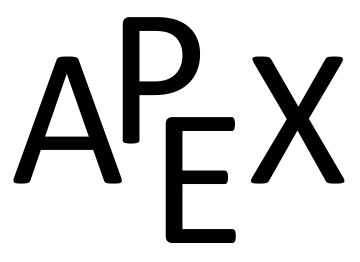Example 10.4.3. Plotting Polar Coordinates.
Plot the following polar coordinates:
\begin{equation*}
A = P(1,\pi/4),\, B=P(1.5,\pi),\, C = P(2,-\pi/3),\, D = P(-1,\pi/4)
\end{equation*}
Solution.
To aid in the drawing, a polar grid is provided below. To place the point \(A\text{,}\) go out 1 unit along the initial ray (putting you on the inner circle shown on the grid), then rotate counter-clockwise \(\pi/4\) radians (or \(45^\circ\)). Alternately, one can consider the rotation first: think about the ray from \(O\) that forms an angle of \(\pi/4\) with the initial ray, then move out 1 unit along this ray (again placing you on the inner circle of the grid).
An illustration of the polar grid system. It is intended as a polar adaptation of the Cartesian grid system. Instead of \(x\) and \(y\) coordinate axes, we see an origin \(O\text{,}\) and an initial ray, pointing horizontally to the right. On the initial ray, points 1, 2, and 3 are marked.
Through each of these points passes a circle centered at \(O\text{,}\) representing the polar coordinate values \(r=1\text{,}\) \(r=2\text{,}\) and \(r=3\text{.}\) Also drawn are several dashed lines through the origin. Viewed as rays from the origin, each of these lines represents a fixed value for the polar coordinate \(\theta\text{.}\)
To plot \(B\text{,}\) go out \(1.5\) units along the initial ray and rotate \(\pi\) radians (\(180^\circ\)).
To plot \(C\text{,}\) go out 2 units along the initial ray then rotate clockwise \(\pi/3\) radians, as the angle given is negative.
The polar grid from the previous image is shown, with the dashed lines removed. On the circle of radius 1, points \(A\) and \(D\) are marked. The segment \(OA\) makes an angle of \(\pi/4\) with the initial ray, while the point \(D\) is on the opposite end of the diameter through \(A\text{.}\)
The point \(B\) lies between the circles of radius 1 and 2, to the left of the point \(O\text{.}\) The point \(C\) is on the circle of radius \(2\) and lies below the initial ray, so that the segment \(OC\) makes an angle of \(-\pi/3\) with the initial ray.
To plot \(D\text{,}\) move along the initial ray “\(-1\)” units — in other words, “back up” 1 unit, then rotate counter-clockwise by \(\pi/4\text{.}\) The results are given in Figure 10.4.4.


